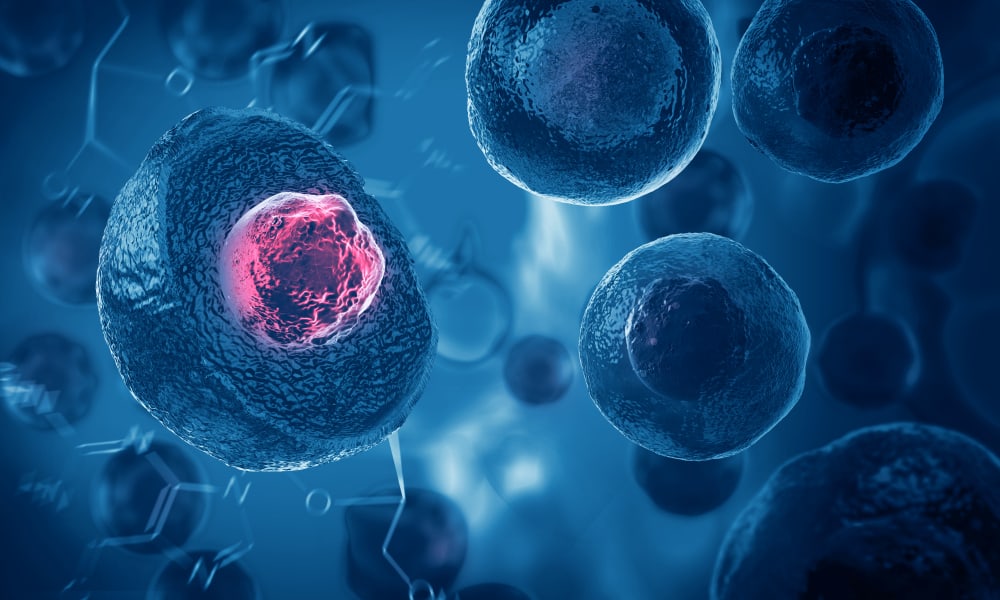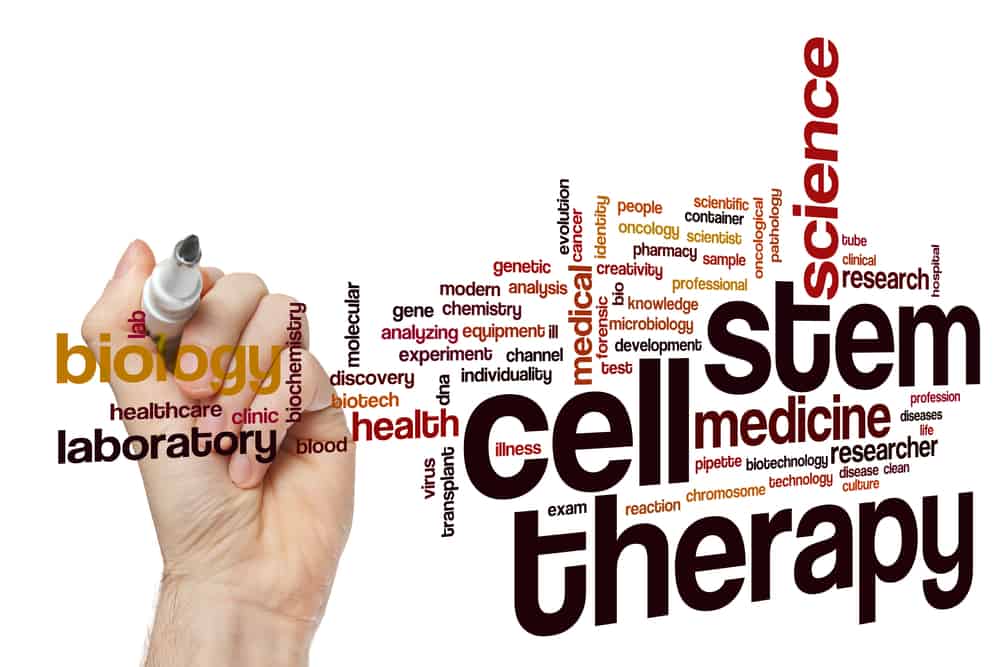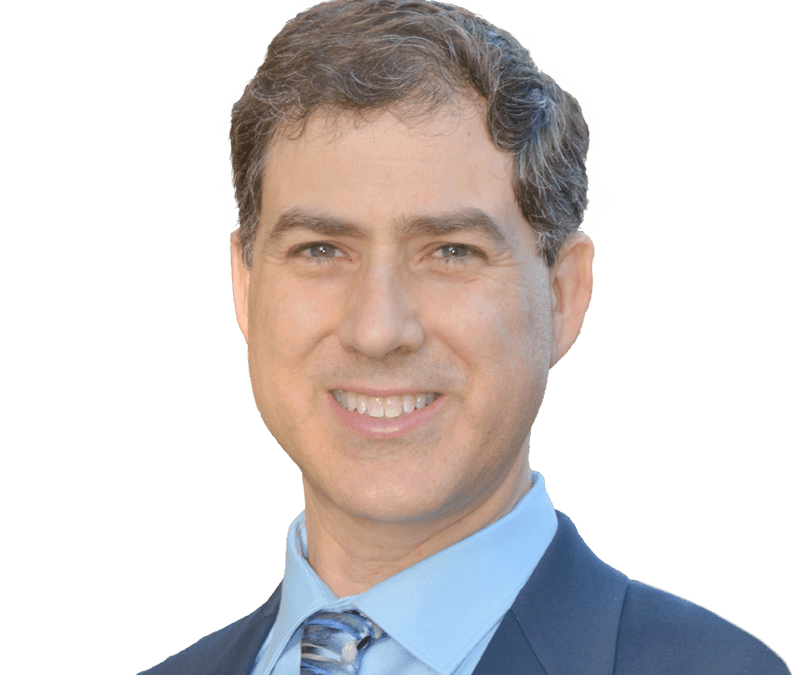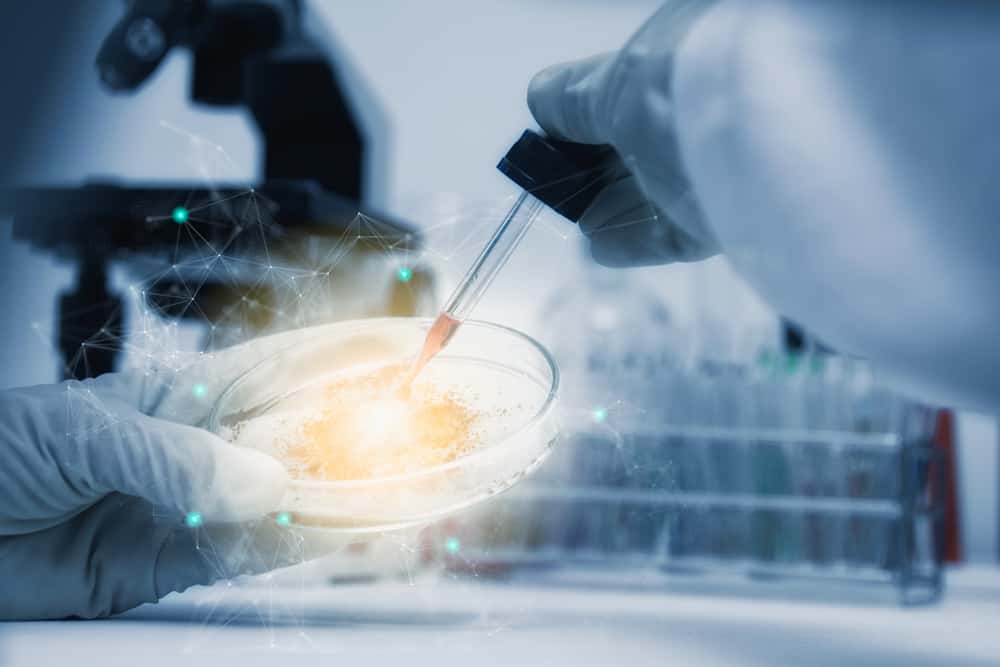
Jun 12, 2020
Fat is an important tissue in the body. Fat provides energy, helps the body stay warm and plays a key role in the absorption of important nutrients such as vitamin A, vitamin D and vitamin E. It also helps the body heal because it contains cells that repair and replace damaged or injured tissue. These adipose derived stem cells, also known as pericytes, form new blood vessels, awaken native stem cells and stimulate the growth of new tissues.
How is Adipose Stem Cell Therapy Different from Bone Marrow Stem Cell Therapy?
Both adipose and bone marrow stem cell therapy have the power to heal. They each offer unique benefits that can address the specific healing needs of an individual patient, based on the extent of their injury or tissue damage.
The benefits of adipose stem cell therapy include:
- High Volume of Healing Cells: Studies have shown that adipose tissue may contain as many as 500 times the number of regenerative cells than an equivalent volume of bone marrow aspirate.
- Age-Resilient: Fat cells maintain certain reparative properties regardless of a person’s age. Bone marrow derived cells may lose their healing capacity with age.
- Flexibility: Research has demonstrated that fat cells and bone marrow derived cells can be used to repair and heal tissue in multiple sites of the body, including cartilage and tendons in the knees, hips, elbows and shoulders.
The LIPOGEMS® Advantage
San Diego Orthobiologics Medical Group was one of the first medical centers in the country to offer LIPOGEMS®, an adipose-based regenerative therapy for orthopedic conditions.
LIPOGEMS® preserves the healing properties of the cells without jeopardizing their structure and function. This means the cells work together naturally, as they do normally in the body, to assist in the healing of injured tissues.
Like all cell based treatments offered at San Diego Orthobiologics Medical Group, LIPOGEMS® is an autologous procedure, which means the patient’s own fat cells are used. Our practice does not endorse the use of donor cell products because they have not been tested for safety or efficacy.
These minimally invasive procedures are performed in our office procedure suites with excellent safety and comfort. The patient’s own fat cells are harvested, processed into small clusters and administered to the patient on the same day.
Positive Pain Relief Using Adipose Stem Cell Therapy
More than 20 clinical studies using LIPOGEMS® are underway worldwide and the initial reports indicate that more than 90% of patients experienced significant relief with the treatment. They are able to resume normal physical activity without pain which is critical to maintaining wellness and enjoying a higher quality of life.
With decades of experience in regenerative medicine, Drs. Christopher J. Rogers and Mary A. Ambach of San Diego Orthobiologics Medical Group are recognized experts in the field of Regenerative Medicine. They were the first clinicians in San Diego to use LIPOGEMS® and continue to advance the field by participating in FDA approved clinical trials. They serve as faculty members and lecturers at national and international medical conferences. They also serve on the board of directors for several national regenerative medicine organizations.
Resources:
https://understandlipogemsphysicians.com
https://www.heart.org/en/healthy-living/healthy-eating/eat-smart/fats/dietary-fats

Jun 2, 2020
What is Prolotherapy?
Prolotherapy (short for proliferative therapy) stimulates the body’s natural healing factors to strengthen and repair injured joints, ligaments and tendons. This minimally invasive procedure is used to address a number of musculoskeletal conditions including:
- Back pain due to degenerative disc disease, sacroiliac joint instability, facet joint syndrome and nerve pain
- Neck pain due to arthritis or whiplash injury
- Knee pain caused by osteoarthritis, meniscal tears or sprains
- Arm and shoulder pain as a result of arthritis, rotator cuff tendon tears, golfer’s elbow, tennis
- elbow and chronic tendonitis.
Studies have shown that 85 to 95 percent of patients with back pain experience improvement with prolotherapy. [i] Additional studies have also shown prolotherapy is successful for various ligament, tendon or joint pain/injuries, including knee arthritis. The Annals of Family Medicine reported that a randomized controlled trial of prolotherapy in patients with knee osteoarthritis resulted in clinically meaningful sustained improvement of pain, function, and stiffness.[ii]
How It Works
Prolotherapy stimulates the body’s natural healing mechanisms to produce new tissue. Using fluoroscopic (x-ray) guidance, the physician injects a mixture of local anesthetics and dextrose (a sugar-based solution) directly to the injured area. The dextrose works as an irritant to kick start the body’s natural healing response and encourages the growth of normal ligament and tendon fibers. This results in long-term healing and pain relief. In some cases, the treatment is repeated with the goal of restoring strength and stability without loss of flexibility and function. As the body heals the pain subsides, in most cases, permanently.
Prolotherapy, when used in lower concentrations, has also been shown to help with nerve pain by blocking nerve pain impulses. This can provide immediate pain relief to joint, nerve and soft tissue injuries.
For patients with advanced injury or degeneration, prolotherapy can be combined with Platelet Rich Plasma (PRP) and autologous (from the same person) adult regenerative cells to boost the regenerative process. Every formulation is specifically targeted to the patient’s unique needs.
Is Prolotherapy Safe?
In contrast to many medical treatments that may provide only temporary benefits, prolotherapy is a safe treatment that offers long-term relief.
Prolotherapy is an in-office procedure performed under local anesthetic. There is no hospitalization required, nor the need for extended rehabilitation. Most patients are able to resume their daily activities immediately. Even those who require additional treatments are likely to enjoy significant pain relief after just one treatment.
Like every other medical intervention, the success of prolotherapy can be impacted by the patient’s overall health as well as any underlying nutritional or genetic deficiencies that might make healing more difficult. It is important to talk with your doctor about the best methods to optimize your health and healing potential.
Dr. Christopher J. Rogers and Dr. Mary A. Ambach of San Diego Orthobiologics Medical Group are leaders in the field of regenerative medicine and have been performing prolotherapy with great success for decades. They serve as faculty members and lecturers at national and international medical conferences and serve on the board of directors for several regenerative medicine organizations. They have published scientific papers in the medical literature and are dedicated to excellent patient care and advancing the field of regenerative medicine.
Resources:
[i] https://prolotherapycollege.org/what-is-prolotherapy/
[ii] https://www.ncbi.nlm.nih.gov/pmc/articles/PMC3659139/

May 26, 2020
Anyone considering stem cell therapies should carefully consider their options when researching medical clinics that claim to offer such treatments. You may recall the news stories that were reported last year on cases of infection following stem cell injections. They reported that 17 people in five states were hospitalized with serious infections following injections of umbilical cord blood derived products. All but two of the illnesses were linked to a single company in California [i].
Are All Stem Cell Therapies the Same?
Before consenting to a stem cell injection, we recommend that you ask your physician the following questions:
What kind of stem cells do you use?
Umbilical cord blood products [ii] are not approved by the US Food and Drug Administration (FDA). The safety and efficacy of these products have not been tested in orthopedic applications. However, your own cells can be used when harvested from a patient’s own (autologous) bone marrow or adipose tissue (fat). These cells contain high levels of mesenchymal stem cells (MSCs) and other orthobiologics that contain anti-inflammatory and regenerative properties.
San Diego Orthobiologics Medical Group offers several different treatment options for autologous cell based therapy. These treatments include Bone Marrow Aspirate Concentrate (BMAC), Microfragmented adipose tissue (MFAT), Platelet Rich Plasma (PRP) and Endoret Plasma Rich in Growth Factors (PRGF). Each treatment offers different benefits to suit a patient’s unique orthopedic needs. We do not use donor (allogeneic) products derived from birth waste tissues (like umbilical cord blood, amniotic fluid, exosomes, or placenta) because they have not been tested for safety or efficacy and are not compliant with current FDA guidelines.
How do you process the cells?
Many clinics use basic centrifuges to separate stem cells, but the best method for obtaining the highest concentrations of regenerative autologous stems cells requires specialized equipment operated in a sterile lab setting.
San Diego Orthobiologics Medical Group established a state-of-the-art facility in Carlsbad that contains some of the most advanced Regenerative Medicine technology in the San Diego area. We process autologous same day platelet rich plasma, regenerative cell concentrates and other orthobiologics safely and at a customized dose in our Regenerative Medicine Lab.
How effective are your treatments?
Clinics or practices that sell donated stem cells do so at some risk to your health. These products are not tested for sterility or viability. Independent testing of these products has shown that they do not contain any live stem cells at all. Only live stem cells can exert the sought after beneficial therapeutic effects. These products have not been demonstrated to contain any healing properties in clinical studies.
San Diego Orthobiologics Medical Group only uses your own bone marrow or fat tissue and is able to process them using state-of-the-art technology. Same-day treatments maximize the healing potential of the fresh (not frozen) regenerative cells.
Is there scientific evidence to support your claims?
Clinics that use autologous cell based treatments are not afraid to participate in clinical trials—in fact they welcome the opportunity to do so—because they know it is important to study these treatments for safety and efficacy.
Based on our extensive experience treating orthopedic conditions with regenerative medicine therapies, San Diego Orthobiologics Medical Group is one of only six clinics in the United States selected to participate in FDA-approved clinical trials to treat knee osteoarthritis. Visit our website (Research section) for an extensive list of peer-reviewed published articles from prestigious medical journals about the different kinds of cell based therapies we offer.
It should be clear that the answer to the question “Are all stem cell therapies the same?” is a resounding “No!”. Anyone considering treatment should understand what works and what does not work. What is safe and what is risky. What is FDA compliant and what is illegal. We believe that patients deserve honest answers to these tough questions.
With decades of experience in regenerative medicine, Drs. Christopher J. Rogers and Mary A. Ambach are recognized experts in the field of Regenerative Medicine. They continue to advance the field by participating in clinical trials and serve as faculty members and lecturers at national and international medical conferences. They also serve on the board of directors for several national regenerative medicine organizations.
Resources:
[i] https://www.washingtonpost.com/national/health-science/miraculous-stem-cell-therapy-has-sickened-people-in-five-states/2019/02/26/c04b23a4-3539-11e9-854a-7a14d7fec96a_story.html
[ii] https://www.fda.gov/news-events/press-announcements/fda-sends-warning-companies-offering-unapproved-umbilical-cord-blood-products-may-put-patients-risk
[iii] https://www.fda.gov/vaccines-blood-biologics/safety-availability-biologics/public-safety-notification-exosome-products

May 19, 2020
Dr. Christopher Rogers and colleagues are first to publish scientific review of stem cell therapy for COVID-19 patients.
Dr. Rogers, along with scientists from around the world, are first to publish a comprehensive scientific review, “Rationale for the Clinical Use of Adipose-derived Mesenchymal Stem Cells for COVID-19 patients.” Clinical trials of stem cell treatments for severe COVID-19 are currently being conducted at dozens of medical centers worldwide. Scientific studies will advance our understanding of the safety and efficacy of stem cell therapy for these seriously ill patients.
This scientific review was published in the peer-reviewed journal, Journal of Translational Medicine (Rogers, C.J., Harman, R.J., Bunnell, B.A. et al. Rationale for the clinical use of adipose-derived mesenchymal stem cells for COVID-19 patients. J Transl Med 18, 203 (2020).
Read the scientific review here:

Mar 10, 2020
In the last two decades, advancements in stem cell research and technology have soared. These revolutionary advances hold a great deal of promise for patients who may suffer from a variety of medical conditions.
What are Stem Cells?
Stem cells have the unique ability to turn into many different types of cells, such as a muscle cell, a tendon cell or a cartilage cell. This process is called “differentiation”. Stem cells also function as part of a repair system that maintains and replenishes cells throughout your entire life. They achieve this by decreasing inflammation, protecting injured cells and stimulating other cells to regenerate. There are many different kinds of stem cells, each with their own specific abilities.
Embryonic stem cells are derived from embryos and have been used for research purposes in the past. They can differentiate into any one of the more than 200 cells in the body. They are only available for the treatment of patients in clinical studies.
Adult stem cells are undifferentiated cells that have a more specific ability to differentiate. There are several different types of these cells and they can replenish certain cells depending upon the specific tissue in which they live. In 1991, a unique population of adult stem cells called the Mesenchymal Stem Cell (MSC) was discovered. The MSC was noted to have an active role in connective tissue repair and the capacity to differentiate into bone, cartilage, and tendon cells.
Since then, significant progress has been made to offer safe and effective treatments using MSCs to heal injured or inflamed tissues. The most studied sources of the MSCs include a patient’s own bone marrow or adipose tissue which contain a heterogenous mixture of reparative cells.
How Can They Be Used?
Stem cell research and technology has evolved to offer many potential medical uses due to their self-renewing qualities and the ability to stimulate tissue healing. Researchers have found stem cells useful for:
● The Study of Disease Processes: Stem cells help scientists understand how diseases occur. Watching and studying stem cells as they mature into their differentiated state helps doctors understand certain diseases and how disease conditions develop.
● Drug Development: Stem cells are used to test drugs for safety and quality. Studying the effectiveness of medications on human stem cells determines their efficacy and toxicity. Stem cells can be “turned into” specific types of cells and then drugs can be tested to see how they work on those specific cells.
● Regenerative Medicine: The body’s natural ability to heal itself is harnessed by stimulating the repair of damaged, diseased or injured tissue using stem cells. Stem cells, directed to differentiate into specific cell types, offer the possibility of a renewable source of replacement cells to treat many common diseases.
Which Orthopedic Conditions have been treated with Stem Cell Therapy?
Several orthopedic conditions have been treated with stem cell therapy. High quality clinical trials have been published regarding the treatment of:
- osteoarthritis in the knee, hip or shoulder
- rotator cuff tendon tears
- achilles tendinopathy
- partial anterior cruciate ligament (ACL) tears
- non-healing bone injuries
- lumbar disc degeneration and low back pain
For more information, published scientific studies can be found at:
www.sdomg.com/fat
www.sdomg.com/bma




